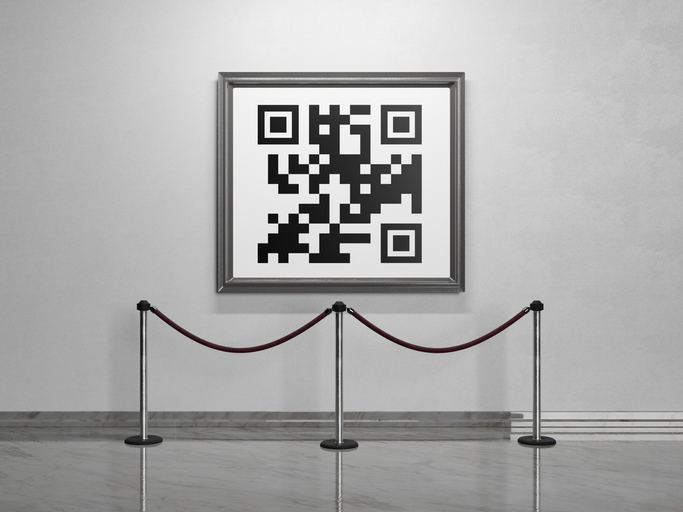Are NFTs, Cryptocurrencies And Web3 The New Multilevel Marketing Schemes
Trendy digital assets are ridiculously easy to create. That’s a problem.
In a recent ad for cryptocurrency exchange FTX, Tom Brady asks seemingly everyone in his contact list, “You in?” As in, are you going to join him in buying some crypto, and not, presumably, in being a football star married to a supermodel. The pitch is straightforward celebrity-endorsement fare, designed to capitalize on the FOMO that is the standard psychological tactic of those who are already invested in cryptocurrencies and related technologies, and who would like the rest of us to come aboard. Mr. Brady has an equity stake in FTX.
A “You in?”-style pitch is also typical of successful multilevel marketing companies. Both make a virtue of the fact that our getting “in” will obviously enrich those urging us to do so, by driving up the value of their own holdings or network. And then, hey, the same could be true for us!
It’s a siren song as old as the promise of attaining financial freedom by selling herbal supplements, cosmetics or leggings from the comfort of your home, enhanced and refined by the ways in which modern communications systems can rapidly elevate ideas and movements from the fringe to the centre of national and global conversation.
But how does owning or trading crypto, which is after all just data—infinitely reproducible, supposedly nearly free thanks to the internet—make one rich? Or for that matter, owning or trading other digital assets like NFTs (or “nonfungible tokens”) that have become all the rage among celebrity art collectors? The straightforward premise: By using the blockchain—a type of public database that anyone can access and everyone can (supposedly) trust—it is possible to create a chunk of data, known as a token, that is unique in the world, and cannot be reproduced. In other words, it is possible to make a digital object, be it a piece of art or a crypto coin, scarce.
There’s a paradox at the root of the growing crypto ecosystem—a disconnect between the technology and the economics. While individual digital assets—bitcoins, pictures of “bored apes,” giant JPEGs of everything the artist Beeple has ever produced—can be unique, the underlying nature of the internet means that there is, in aggregate, a potentially infinite supply of cryptocurrency, NFTs and all the other exchangeable tokens that make up “crypto” and the broader vision for a decentralized internet known as “Web3.”
Basic economics suggests an unhappy outcome: When the demand for something is limited—there are only so many people on earth, and only so much traditional money to be converted into tokens and cryptocurrencies—and the supply is infinite, the average price of that asset is going to zero.
It should be said up front that this does not imply that everything currently being stuffed onto a blockchain—which, judging from my inbox, is a Borgesian Library of Babel of every possible thing imaginable—will ultimately be worthless. Like every other means of exchange and storage of value since cowrie shells and Mesopotamian shekels, even pictures of “bored apes” of debatable artistic merit have value because enough people say they do.
The key to understanding the long-term trend in the value of supposedly scarce digital assets is understanding how the latest generation of them differs from previous ones. In what might be called “first generation” blockchain-based technologies, like bitcoin, there are only so many “coins,” and creating the ones that do exist is difficult and expensive. But second-generation technologies are rapidly diversifying into a dizzying array of potential applications, from “smart contracts” that trace the provenance of luxury goods to new competitors for Facebook. And to do all this, these technologies are predicated on the idea that the only limit to what can be done with them is the human imagination.
The barriers to creating new blockchain-based things are low, and—thanks to intense interest and massive investment—dropping all the time. My colleague Joanna Stern demonstrated this when she put a piece of her son’s art on the blockchain—and thereby technically “minted an NFT.”
The upshot is that nearly anyone can create an NFT, from real artists to scam artists. (OpenSea, the leader in this space by volume, recently said that many of the NFTs minted on its platform are plagiarized, fake or spam.) And while creating your own cryptocurrency can be challenging, creating a new “token” on an existing blockchain, which for many applications is nearly the same thing, isn’t much harder than creating an NFT.
Indeed, if one were to distil the entire promise of Web3 to a single sentence, it would be this: By virtue of the ease of creating new tokens and building new businesses around them, Web3 has the potential to securitize any iota of data or code we ever produce. Another way to put that: Web3 represents a way to financialize every possible human interaction.
“Web3 is such a hyper-capitalistic way of trying to reframe the web,” says Catherine Flick, a senior researcher in technology ethics who teaches computing and social responsibility at Britain’s De Montfort University. This view of human relations and the possibility of profiting from them taps into many Americans’ feelings of economic insecurity, and is not unlike direct-marketing schemes, only this one is aimed more at disenfranchised young men, she adds.
Matt Galligan, co-founder of XMTP Labs, a company working on a system of communication for blockchain users, says that, while extracting money from everything anyone ever does might sound dystopian, it is similar to the business models of Facebook, Google and their competitors. The difference, he adds, is that those companies, among the highest-valued on earth, get to keep all the money that results.
The ease of creating new crypto-whatsits is one reason so many new NFTs, tokens, and businesses claiming to be based on crypto, or the blockchain, or some word salad of related terms, are born daily. The gold-rush mentality of many of those with the loudest voices and biggest reach in the crypto community also helps. But this mania for being early to business models that by their nature reward those who are first, also contributes to their high rate of failure.
Recent research has found that most NFTs don’t sell. A hardly-comprehensive list of dead and abandoned tokens created for crypto projects includes nearly 2,400 entries. For every new cryptocurrency that retains any value, there are many that become worthless. One recent example: the “Let’s Go Brandon” coin, which briefly saw a flare of interest from detractors of President Biden, then had its sponsorship of a Nascar vehicle blocked, and has since crashed in value.
Risky behaviour and new frauds have become commonplace, including a tactic called “rug pulls.” In one version, developers, often concealed behind pseudonymous online identities, offer a new token or currency, then take all the money or crypto people traded in for it, and walk away. The head of the U.S. Securities and Exchange Commission has said crypto on the whole is a “Wild West” in need of stronger regulation.
Tushar Jain, managing partner at Austin-based crypto investment firm Multicoin Capital, believes that the crypto industry needs more clarity from regulators, to help everyone identify bad actors. He says current regulations are too vague, and that so far the SEC has focused on going after companies it says are violating them, rather than making it clear how not to run afoul of regulations.
Not everyone who uses crypto and tokens as part of their business is concerned about whether they are tradable financial assets, and whether regulators would or should be interested in them. That’s because crypto tokens can be used as all sorts of things that aren’t securities, from membership in a club to tracking the whereabouts of a shipping container. Indeed, some of the blockchain-based businesses that seem most plausible as candidates to survive in the long run don’t treat the tokens they use as securities at all.
Friends With Benefits, a group of about 3,500 artists, coders and other creative types, created its own token, $FWB as a means of selling and recording memberships in the group. People who hold five FWB tokens can access events affiliated with the group in a given city, and if a person holds 75 tokens, they can access all events anywhere in the world, as well as a FWB chat service hosted on Discord. Recent events have included musical performances in Miami and Paris, featuring well-known acts such as Azealia Banks, Erykah Badu and Pussy Riot.
“Our mission is to show that crypto isn’t scary, crypto isn’t a boys’ club or anything else—it is just another tool for culture,” says Raihan Anwar, a co-founder of FWB who lives in Los Angeles.
XMTP Labs, the company co-founded by Mr. Galligan, which has received investment from venture-capital firms including Andreessen Horowitz, will issue its own token. XMTP and its investors will own a minority of the tokens issued. This is a common business model for Web3 companies, many of which aim to profit through the issuing and appreciation of their tokens, rather than conventional sales or subscriptions denominated in fusty old things like the U.S. dollar.
That said, Mr. Galligan’s business model isn’t built on capitalizing on any increase in the value of the tokens his company issues. “We don’t think the only way to make money on this is ‘Token Go Up,’ ” he says, referring to a meme common in Web3 circles, which alludes to the idea that people can get rich by issuing a token and watching its value skyrocket if they convince enough people to buy into their vision.
Because the goal of XMTP is the creation of a new, open standard for communications—like email, only modernized—Mr. Galligan thinks his company could make money by consulting for companies that want to use the protocol.
Dr. Flick isn’t convinced that even the most benevolent of efforts to create distributed organizations or Web3 startups can ever get around the inequalities inherent in blockchains. Blockchain-based organizations inevitably have a pyramid-shaped economic structure, in which those who jump in early earn disproportionate rewards through the appreciation in value of their tokens, she argues. Those who come along later are likely to profit little, or lose money, by joining.
For these reasons, it is possible that even if Web3 and cryptocurrencies in the long run result in a handful of valuable companies, individual small-time investors will, as is so often the case, not be the ones who profit from their rise.
“I could totally be wrong about all of this,” says Mr. Galligan, who has built and sold a number of tech startups before. “But if it succeeds, because I was early, should one not be rewarded for that risk?”
This stylish family home combines a classic palette and finishes with a flexible floorplan
Just 55 minutes from Sydney, make this your creative getaway located in the majestic Hawkesbury region.
As Paris makes its final preparations for the Olympic games, its residents are busy with their own—packing their suitcases, confirming their reservations, and getting out of town.
Worried about the hordes of crowds and overall chaos the Olympics could bring, Parisians are fleeing the city in droves and inundating resort cities around the country. Hotels and holiday rentals in some of France’s most popular vacation destinations—from the French Riviera in the south to the beaches of Normandy in the north—say they are expecting massive crowds this year in advance of the Olympics. The games will run from July 26-Aug. 1.
“It’s already a major holiday season for us, and beyond that, we have the Olympics,” says Stéphane Personeni, general manager of the Lily of the Valley hotel in Saint Tropez. “People began booking early this year.”
Personeni’s hotel typically has no issues filling its rooms each summer—by May of each year, the luxury hotel typically finds itself completely booked out for the months of July and August. But this year, the 53-room hotel began filling up for summer reservations in February.
“We told our regular guests that everything—hotels, apartments, villas—are going to be hard to find this summer,” Personeni says. His neighbours around Saint Tropez say they’re similarly booked up.
As of March, the online marketplace Gens de Confiance (“Trusted People”), saw a 50% increase in reservations from Parisians seeking vacation rentals outside the capital during the Olympics.
Already, August is a popular vacation time for the French. With a minimum of five weeks of vacation mandated by law, many decide to take the entire month off, renting out villas in beachside destinations for longer periods.
But beyond the typical August travel, the Olympics are having a real impact, says Bertille Marchal, a spokesperson for Gens de Confiance.
“We’ve seen nearly three times more reservations for the dates of the Olympics than the following two weeks,” Marchal says. “The increase is definitely linked to the Olympic Games.”

Getty Images
According to the site, the most sought-out vacation destinations are Morbihan and Loire-Atlantique, a seaside region in the northwest; le Var, a coastal area within the southeast of France along the Côte d’Azur; and the island of Corsica in the Mediterranean.
Meanwhile, the Olympics haven’t necessarily been a boon to foreign tourism in the country. Many tourists who might have otherwise come to France are avoiding it this year in favour of other European capitals. In Paris, demand for stays at high-end hotels has collapsed, with bookings down 50% in July compared to last year, according to UMIH Prestige, which represents hotels charging at least €800 ($865) a night for rooms.
Earlier this year, high-end restaurants and concierges said the Olympics might even be an opportunity to score a hard-get-seat at the city’s fine dining.
In the Occitanie region in southwest France, the overall number of reservations this summer hasn’t changed much from last year, says Vincent Gare, president of the regional tourism committee there.
“But looking further at the numbers, we do see an increase in the clientele coming from the Paris region,” Gare told Le Figaro, noting that the increase in reservations has fallen directly on the dates of the Olympic games.
Michel Barré, a retiree living in Paris’s Le Marais neighbourhood, is one of those opting for the beach rather than the opening ceremony. In January, he booked a stay in Normandy for two weeks.
“Even though it’s a major European capital, Paris is still a small city—it’s a massive effort to host all of these events,” Barré says. “The Olympics are going to be a mess.”
More than anything, he just wants some calm after an event-filled summer in Paris, which just before the Olympics experienced the drama of a snap election called by Macron.
“It’s been a hectic summer here,” he says.

AFP via Getty Images
Parisians—Barré included—feel that the city, by over-catering to its tourists, is driving out many residents.
Parts of the Seine—usually one of the most popular summertime hangout spots —have been closed off for weeks as the city installs bleachers and Olympics signage. In certain neighbourhoods, residents will need to scan a QR code with police to access their own apartments. And from the Olympics to Sept. 8, Paris is nearly doubling the price of transit tickets from €2.15 to €4 per ride.
The city’s clear willingness to capitalise on its tourists has motivated some residents to do the same. In March, the number of active Airbnb listings in Paris reached an all-time high as hosts rushed to list their apartments. Listings grew 40% from the same time last year, according to the company.
With their regular clients taking off, Parisian restaurants and merchants are complaining that business is down.
“Are there any Parisians left in Paris?” Alaine Fontaine, president of the restaurant industry association, told the radio station Franceinfo on Sunday. “For the last three weeks, there haven’t been any here.”
Still, for all the talk of those leaving, there are plenty who have decided to stick around.
Jay Swanson, an American expat and YouTuber, can’t imagine leaving during the Olympics—he secured his tickets to see ping pong and volleyball last year. He’s also less concerned about the crowds and road closures than others, having just put together a series of videos explaining how to navigate Paris during the games.
“It’s been 100 years since the Games came to Paris; when else will we get a chance to host the world like this?” Swanson says. “So many Parisians are leaving and tourism is down, so not only will it be quiet but the only people left will be here for a party.”
This stylish family home combines a classic palette and finishes with a flexible floorplan
Just 55 minutes from Sydney, make this your creative getaway located in the majestic Hawkesbury region.


















